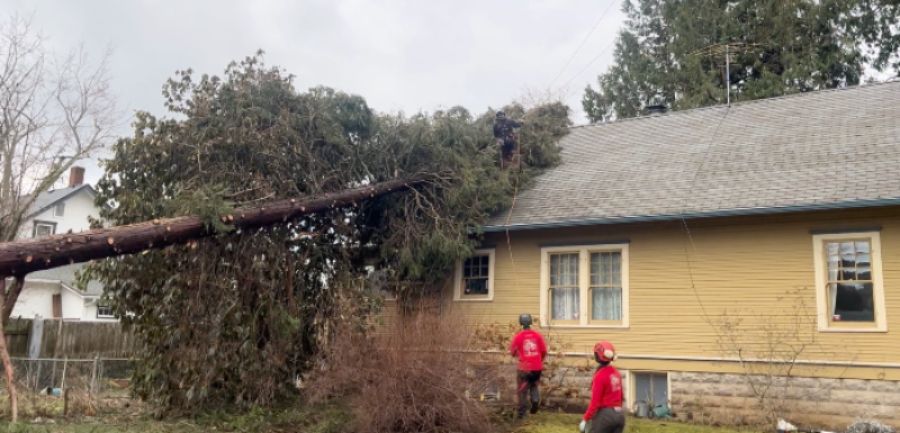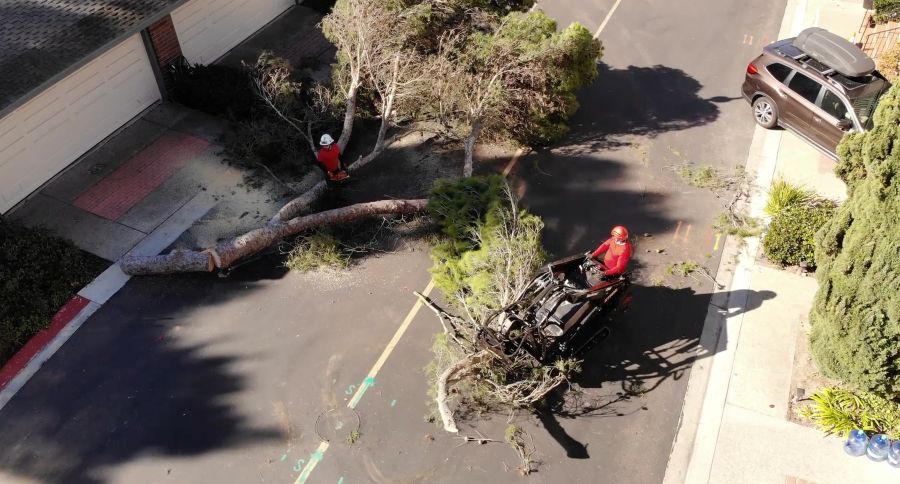Trees add beauty to our surroundings, offering shade, privacy, and even increase in property value. They play a crucial role in the ecosystem, providing oxygen and a home for wildlife. However, despite all their benefits, there are times when trees can become liabilities rather than assets. Storms, disease, or simple old age can lead to trees breaking and falling, causing property damage and risks to personal safety. What should you do when a tree falls? Assessing the situation and staying safe are the first steps to take. But right after, people will start to ask: Who is responsible for the tree’s removal and cleanup?
Who is Liable for a Fallen Tree?
The liability for a fallen tree usually depends on why it fell and whose property it fell on. Generally, if a tree falls due to natural events like harsh weather, the owner of the property where the tree fell is responsible for the removal. However, if the fall results from neglect, such as failing to address a visibly diseased or dying tree, the tree owner could then be held liable for any damages it causes.
Reason Why Did Tree Fall?
Identifying the reason behind a tree’s fall helps determine liability. If a healthy tree falls due to a natural cause, such as a windstorm, it’s considered an act of God. In this instance, the owner of the property where the tree lands is typically responsible for its removal. However, if the tree was poorly maintained or diseased, the owner of the tree could be held liable for negligence. So have your trees regularly maintained and inspected to ensure tree health and avoid liabilities!
Whose Tree Is It?
Ownership is determined by where the tree was rooted before it fell. If the tree’s trunk is entirely on one property, that property owner owns it, regardless of where the branches are extended. However, if the trunk straddles a boundary line, it is considered a boundary tree, and both property owners share ownership and responsibility for it. This shared ownership can complicate liability issues when such a tree falls.

Will my homeowner’s insurance cover the cost of fallen trees?
Most homeowner’s insurance policies cover tree removal if it falls on a covered structure, like your home or garage, regardless of the tree’s origin. If the tree falls without damaging any insured structure, whether or not removal is covered can vary by policy. Typically, if the fallen tree blocks a driveway or a wheelchair ramp, your insurance might cover removal costs, but review your policy for specific coverages and limitations.
Who is Responsible if a Neighbor Tree Falls Onto My Property?
If your neighbor’s tree falls onto your property due to natural causes, you will likely be responsible for the removal. However, if you can prove the tree was neglected or diseased and your neighbor ignored it, they could be liable for any damages or removal costs. It’s always best to communicate concerns about potentially hazardous trees to your neighbor before any incidents occur.
What if a Tree on Public Land Falls on my Property?
When a tree on public land falls onto your property, the local government or responsible public entity may be liable for removal, especially if you previously reported the tree as a hazard. However, procedures and policies vary widely, so it’s important to report the incident and consult with local authorities immediately.
Can I Remove a Fallen Tree Myself?
While you might be tempted to remove a fallen tree yourself, especially if it’s small, it’s important to consider the risks. Tree removal can be dangerous and requires proper equipment and expertise. For larger trees, or if the tree has fallen on a structure, it’s safer and wiser to hire professionals who have the necessary skills and insurance to handle the job safely. If you attempt tree removal on your own and cause further harm, you may be held liable for the additional damages. So, get professional help for tree removals to keep everyone safe!

Have an expert check the health of your trees
The best way to minimize the hazards of falling trees is through prevention. Regularly inspect the health of your trees to identify potential problems before they lead to a tree falling. Hiring arborist consulting to assess the health and stability of your trees is a smart investment, potentially saving you from future liabilities. If your tree has fallen or is likely to fall, hire professional arborists for tree removal to ensure your property’s and community’s safety.





